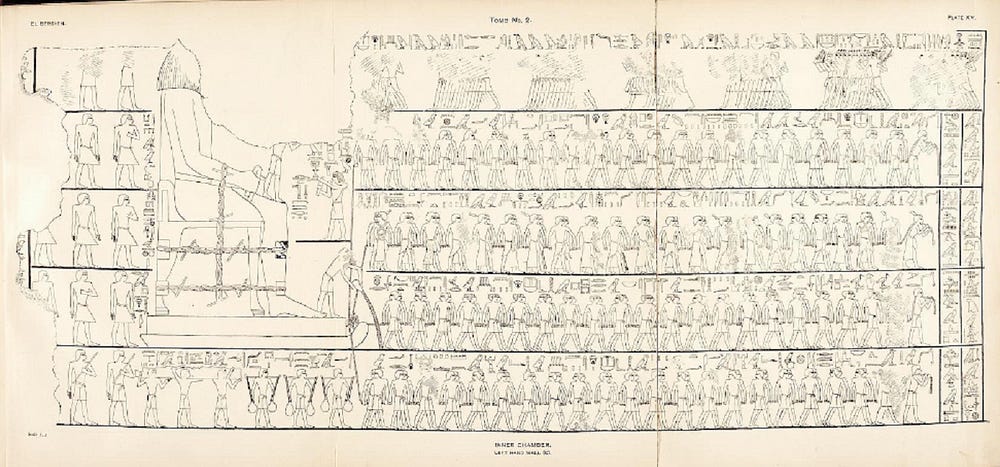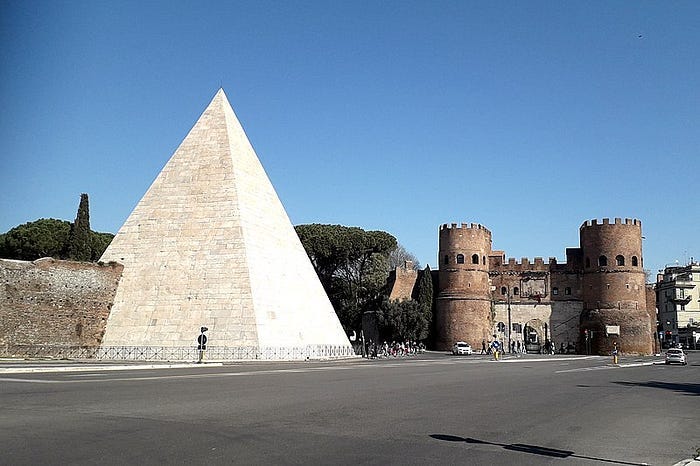Why The Romans Stole A 400-Ton Egyptian Obelisk
Taking monuments and absorbing the prestige of an ancient culture

History is often a recorded description of wars and one group conquering another for various reasons. Usually, it revolves around territory, resources, or power. Although something baser often gets forgotten.
Namely, conquering an enemy or neighbor is a good way to accumulate wealth through the spoils of war, and we have many examples.
Before and during WWII, it’s estimated the Nazis may have stolen one-fifth of all the movable art in occupied Europe. That’s not including gold, currency, and other treasures, either.
While “sack” is often applied to NFL quarterbacks or as a euphemism for getting fired, its origin is meant to plunder a captured city. In this regard, a few things were out of bounds. People, property, and cultural heritage could often be taken away as war booty.
In the ancient world, there was even a practice called godnapping, where an army would steal a city’s god (the physical representation of the deity) to keep the population compliant.
But the ancient Romans took the sacking to another level. They were unparalleled conquerors and kleptomaniacs. After defeating Marc Antony and Cleopatra in a civil war and annexing Egypt, the new emperor Octavian decided he wanted more than the Egyptian treasury.
Specifically, Octavian spied obelisks weighing hundreds of tons and decided to take them home. This leads to a couple of obvious questions.
First, how do you transport massive stone monuments across the ocean in the ancient world? Second, and most important, why do it? We’ll start with how because it partly answers why.
How To Move An Obelisk
According to the Encyclopedia Britannica, an obelisk is a “tapered monolithic pillar, originally erected in pairs at the entrances of ancient Egyptian temples.” These monuments were cut out of a single piece of stone, usually red granite.
All four sides are embellished with hieroglyphics composed of dedications to the sun god and tributes to the ruler who ordered the monument built. The bottom rectangular base is wider than the top, forming a pyramid.

The Unfinished Obelisk, is believed to have been commissioned by the Pharaoh Hatshepsut around 1400 BC and left buried due to cracks in the façade. It’s an excellent example of how obelisks were made and their possible sizes.
They were hewed out of a single rock in a quarry, then pulled to the Nile for transport, unloaded, and pulled again before being placed upright on a base. The Egyptians turned this into a cultural science.

The art organization Getty explains that once an obelisk was finished at the quarry, ropes were tied to it and pulled onto a sled. Work crews moved the sled towards the Nile, where the monument began its second travel phase. This required an obelisk ship.
Remco Bronkhorst at the University of Groningen in the Netherlands says the Egyptians were well capable of floating these stone pillars via the Nile. Cleopatra had moved one to Alexandria. Not to mention, Hatshepsut left depictions of a large barge carrying two obelisks horizontally, aided by smaller ships.

Octavian turned Egypt into a province in 30 BC, and about 20 years later, the Romans began transporting obelisks across the ocean. Bronkhorst says eventually, Rome had 13 obelisks in total (8 from Egypt and the other five either copies made in Rome or pillars created in Egypt for Romans.)
The framework for moving the monuments already existed, and the Romans had to modify the river ships to sail the sea. Once at a home port, they had extensive river networks to carry the obelisk to Rome.
Although crossing the sea was still a fantastic feat of engineering, the previously pictured Lateran Obelisk, transported in 357 AD, originally stood about 118 feet high and weighed nearly 455 tons.
Pliny the Elder, who lived in the first century AD, described the Roman obelisk ships in his Natural History (36.14) as impressive as the monuments they carried.
According to Pliny:
“The most difficult enterprise of all, was the carriage of these obelisks by sea to Rome, in vessels which excited the greatest admiration. Indeed, the late Emperor Augustus consecrated the one which brought over the first obelisk, as a lasting memorial of this marvelous undertaking, in the docks at Puteoli; but it was destroyed by fire. As to the one in which, by order of the Emperor Caius, the other obelisk had been transported to Rome, after having been preserved for some years and looked upon as the most wonderful construction ever beheld upon the seas, it was brought to Ostia, by order of the late Emperor Claudius…”
While no depictions of these ships exist, according to the ancient writer above, they were set up like museum pieces to be admired for a time. Bronkhorst also notes that archeologist Otello Testaguzza believed he found “imprints of planks, beams and holes” of Caligula’s (Caius’) obelisk ship.
Testaguzza estimated the remains to have been 341 feet long, over 65 wide, and about 41 high, although the find is debated. But the impressive nature of transporting the obelisks from Egypt to Rome is beyond debate, bringing us back to why one would take them.
The Point Of Taking Obelisks From A Conquered Foe

The logic of taking money, treasure, or easily transportable items is firm. But why go through all the trouble, engineering woes, and frustration of bringing giant stone structures across the Mediterranean?
Well, the act of making this happen is a statement in itself.
After a brutal civil war, Octavian needed to solidify his rule among a population where segments didn’t support him. Sailing obelisks back to Rome demonstrated his power and the strength of the new empire, which grew out of the ashes of the former republic.
Therefore, repatriating obelisks could be an awe-inspiring feat performed by any emperor to win the support of the elites and masses alike.
Moreover, despite Rome’s military and engineering prowess, they were the new kids on the block culturally. Ancient great civilizations like Greece and Egypt overshadowed Roman cultural heritage by thousands of years. So, the new kids adapted by copying.
Roman architecture grew from mimicking and then improving upon the style of Greek and Etruscan neighbors. Rome’s pantheon of gods also looks very Greek. Moreover, elite Romans often conversed and wrote in Greek, as seen in Emperor Marcus Aurelius’ Meditations.
This continued with the Egyptians, too. Annalee Newitz, in Four Lost Cities, explains there was a lavish temple to Isis in Pompeii. Worshipping this Egyptian goddess was “all the rage” for rich Roman women in the first century.

Moreover, while the Romans couldn’t take the pyramids, they built their own. The Pyramid of Cestius (built about 15BC) still stands in Rome today.
In a way, bringing the obelisks to Rome wasn’t just a symbol of the greatness of an Emperor and the empire but a sign the Romans were inheritors, continuing the greatness of a culture that existed thousands of years before them.
So, why would the Romans steal a 400-ton obelisk? Well, to absorb the prestige, history, and ideas behind it as a springboard for their empire.
-Originally posted on Medium 6/26/24


